CVB scientists have recently published an official list of ticks in NJ, as documented by museum voucher specimens.
The first four (starred*) are the most common human-biting tick and known vectors of human disease. The remaining ticks rarely (or never) bite humans and are most often found on wildlife. It would be unlikely for a human to encounter them unless handling wildlife.
Blacklegged tick* (Ixodes scapularis)
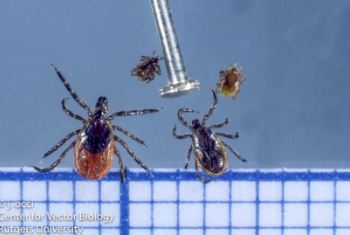
Blacklegged tick fact sheet available here.
Lone star tick* (Amblyomma americanum)
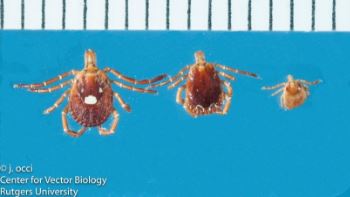
Lone star tick fact sheet available here.
American dog tick* (Dermacentor variabilis)
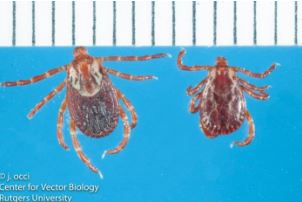
American dog tick fact sheet available here.
Brown dog tick* (Rhipicephalus sanguineas)
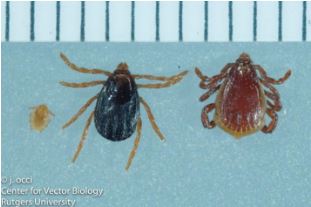
Brown dog tick fact sheet available here.
Longhorned tick (Haemaphysalis longicornis)
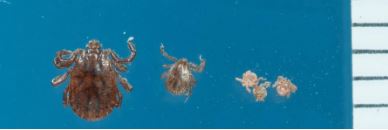
This is an exotic species only recently discovered to exist in NJ. Read more here. Its proclivity for biting humans in NJ and potential to transmit diseases is being investigated but is not yet known.
Woodchuck tick (Ixodes cookei)
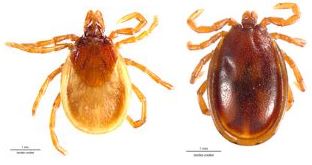
Images from Georgia Southern Interactive tick key
Info from the UMaine Cooperative Extension available here.
Squirrel tick (Ixodes marxi)
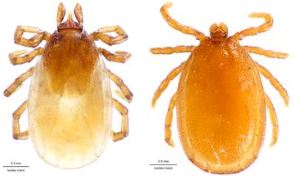
Images from Georgia Southern Interactive tick key
Info from the UMaine Cooperative Extension available here.
Rabbit tick (Ixodes dentatus)
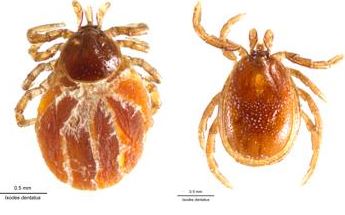
Images from Georgia Southern Interactive tick key
Info from the UMaine Cooperative Extension available here.
Note: two species found in NJ use the common name “Rabbit tick,” Ixodes dentatus and Haemaphysalis leporispalustris.
Raccoon tick (Ixodes texanus)
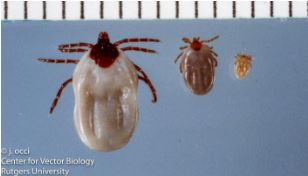
Bird tick (Ixodes brunneus)
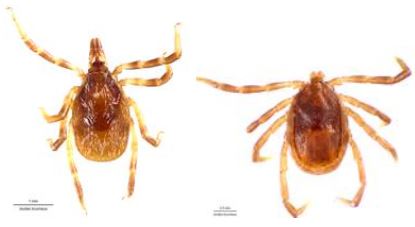
Images from Georgia Southern Interactive tick key
Info from the UMaine Cooperative Extension available here.
Moose (Winter) tick (Dermacentor albipictus)
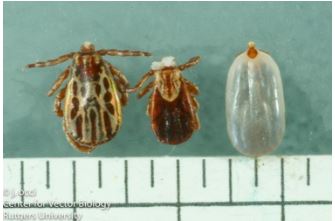
Info from the UMaine Cooperative Extension available here.
Rabbit tick (Haemaphysalis leporispalustris)
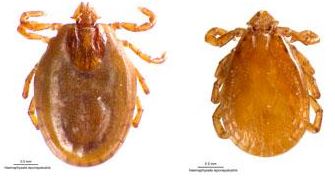
Images from Georgia Southern Interactive tick key
Info from the UMaine Cooperative Extension available here.
Note: two species found in NJ use the common name “Rabbit tick,” Ixodes dentatus and Haemaphysalis leporispalustris.
